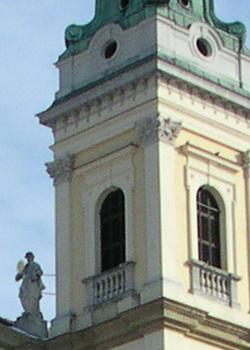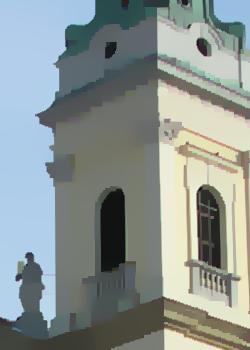





 |
 |
 |
 |
 |
 |
| Input image and its detail. | Result of classical shift-invariant Haar wavelet shrinkage: typical blocky artefacts and misaligned colour channels due to independent processing of the RGB channels. | Shift-invariant Haar wavelet filtering with diffusion-inspired shrinkage rules improves rotation invariance [6] and avoids colour artefacts. |
| [1] |
G. Steidl, J. Weickert: Relations between soft wavelet shrinkage and total variation denoising. In L. Van Gool (Ed.): Pattern Recognition. Lecture Notes in Computer Science, Vol. 2449, Springer, Berlin, 198-205, 2002. |
| [2] |
P. Mrázek, J. Weickert, G. Steidl and M. Welk On iterations and scales of nonlinear filters O. Drbohlav (ed.): Computer Vision Winter Workshop 2003, Valtice, Czech Republic, pp.61-66. Czech Pattern Recognition Society, 2003. |
| [3] |
T. Brox, M. Welk, G. Steidl, J. Weickert: Equivalence results for TV diffusion and TV regularisation. L. D. Griffin, M. Lillholm (Eds.): Scale Space Methods in Computer Vision. Lecture Notes in Computer Science, Vol. 2695, Springer, Berlin, 86-100, 2003. |
| [4] |
P. Mrázek, J. Weickert and G. Steidl Correspondences between wavelet shrinkage and nonlinear diffusion L.D. Griffin and M. Lillholm (Eds.): Scale-Space 2003, LNCS 2695, pp. 101-116. Springer, 2003. |
| [5] |
G. Steidl, J. Weickert, T. Brox, P. Mrázek, M. Welk: On the equivalence of soft wavelet shrinkage, total variation diffusion, total variation regularization, and SIDEs. Preprint no. 94, Department of Mathematics, Saarland University, Saarbrücken, Germany, 2003. Accepted for publication in SIAM Journal on Numerical Analysis. |
| [6] |
P. Mrázek and J. Weickert Rotationally invariant wavelet shrinkage B. Michaelis and G. Krell (Eds.): DAGM 2003, LNCS 2781, pp. 156-163. Springer, 2003. |
| [7] |
P. Mrázek, J. Weickert and G. Steidl Diffusion-inspired shrinkage functions and stability results for wavelet denoising Preprint no. 96, Department of Mathematics, Saarland University, Saarbrücken, Germany, 2003. |
| Pavel Mrázek, mrazek@mia.uni-saarland.de | Last modified: Jan 13, 2004. |